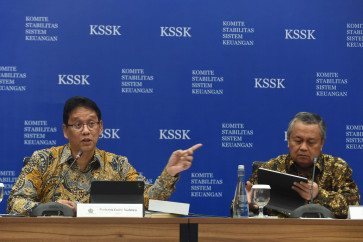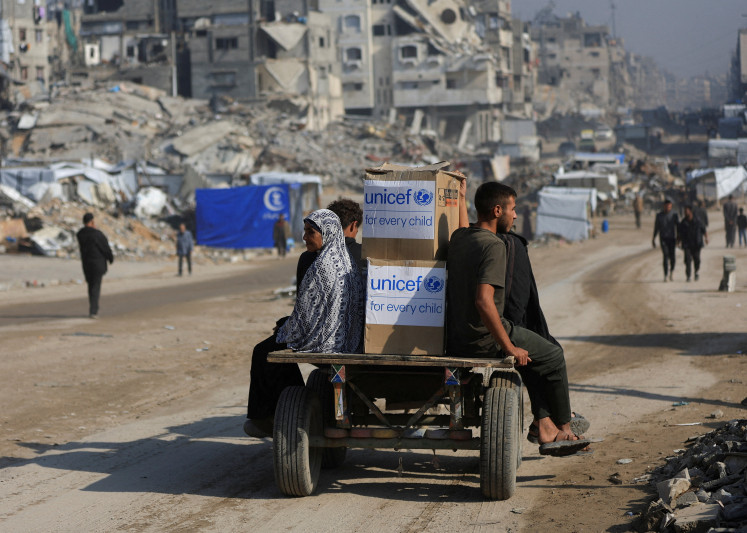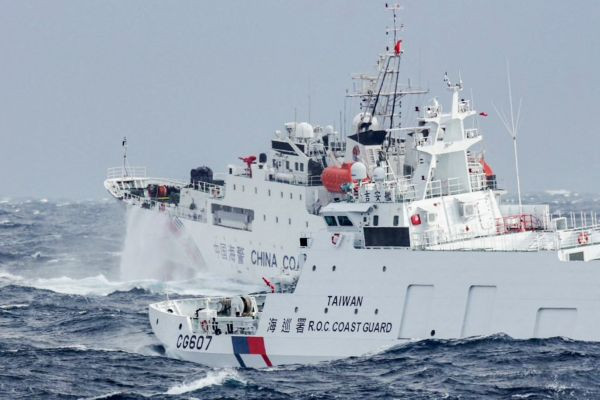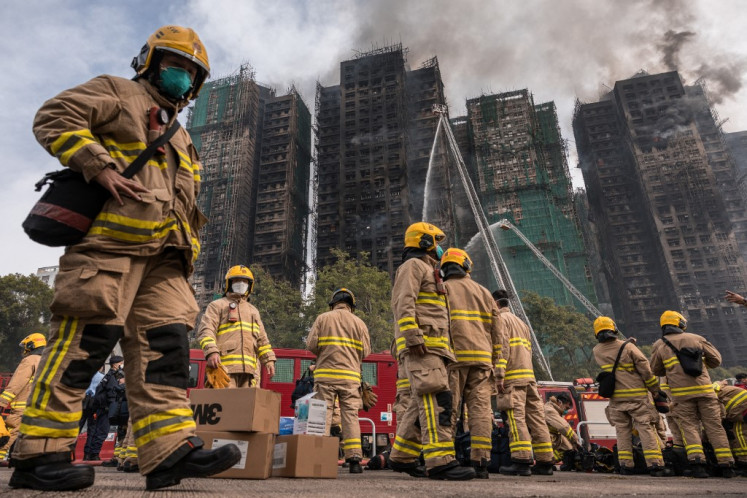Popular Reads
Top Results
Can't find what you're looking for?
View all search resultsPopular Reads
Top Results
Can't find what you're looking for?
View all search resultsEl Niño 2019: Possible impact in Indonesia
The worst ever recorded El Niño of 2015 caused the world’s weather to change. Presently El Niño is predicted to be more frequent, turning into a major climate anomaly threat. Given its normal 5-year return period, its early appearance this year has raised alarm bells.
Change text size
Gift Premium Articles
to Anyone
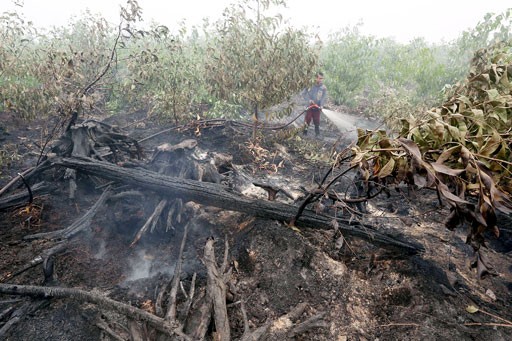 The El-Niño effect: Officers spray water on forest fires in a concession area in Tulung Selapan, Ogan Komering Ilir, South Sumatra, on Oct. 28. Millions of hectares of forest and peatland in Java, Kalimantan, Sulawesi and Papua have caught fire during the prolonged drought. Major landslides and floods are looming for Indonesia as the archipelagic nation prepares to enter the rainy season at the end of this month. (JP/Jerry Adiguna )
The El-Niño effect: Officers spray water on forest fires in a concession area in Tulung Selapan, Ogan Komering Ilir, South Sumatra, on Oct. 28. Millions of hectares of forest and peatland in Java, Kalimantan, Sulawesi and Papua have caught fire during the prolonged drought. Major landslides and floods are looming for Indonesia as the archipelagic nation prepares to enter the rainy season at the end of this month. (JP/Jerry Adiguna )
T
he worst ever recorded El Niño of 2015 caused the world’s weather to change. Presently El Niño is predicted to be more frequent, turning into a major climate anomaly threat. Given its normal 5-year return period, its early appearance this year has raised alarm bells. It is feared that El Niño-affected regions in Indonesia will severely suffer from sufficient water resources that might alter the planting season, reducing agricultural productivity and threatening national food security.
Many studies have revealed a strong correlation between El Niño and rainfall variability which further leads to retreat of the rainfall onset in Indonesia. A significant shift of the rainy season is found as El Niño signs strengthen, causing a prolonged dry season. Based on monthly average rainfall characteristics in 30 years, Indonesia is identified to have three main types of climatic zones, i.e., monsoonal, equatorial, and local type climates. The peak of the rainy season of the monsoonal type climate occurs in January-February. Meanwhile for the equatorial type climate (e.g., Aceh, North and West Sumatera, Riau and Kalimantan), two peaks of rainfall are found in March and October.
In the local type climatic zone (e.g., Maluku islands), the peak of the rainfall occurs in July/August. Monsoonal type-climatic zone is further divided into two types. The first are in regions with drier and longer dry season (e.g., Lombok, Nusa Tenggara) compared to that such as in Java, Bali, South Sumatra, South Sulawesi. Both types have significantly less rainfall during the dry season from June to August.
Since the center of Indonesia’s rice barns are mostly located in monsoonal type-climatic zones which are strongly affected by El Niño, it contributes greatly to drought over the region. In enhancing water resources management, the prediction of El Niño occurrence is then urgently required.
According to the latest report released in February from the United States’ National Oceanic and Atmospheric Administration, El Niño signs with weak intensity is likely this year. In addition, Indonesia’s Meteorology, Climatology and Geophysics Agency (BMKG) also confirms weak El Niño until July in Indonesia. Though we might not have a severe drought approriate mitigation is still necessary. President Joko “Jokowi” Widodo has appealed for efforts to overcome this issue so that farmers can harvest twice a year. As many as 65 dams are planned as well as improvement of irrigation systems to ensure water resources, the key to food security. Thus such climate anomaly should no longer become an obstacle to maintain or even increase agricultural productivity. Therefore the harvesting
season can be well-managed.
Climate-risk management with effective use of climate information would further help to manage water resources, particularly in scheduling rain harvesting and water storage. Professionals could then set up early strategies to optimize productivity during this year’s dry and rainy season which coincides with El Niño.
Reducing disaster risks by minimizing the climate risk through proper adaptation and mitigation is urgent. Excessive use of fossil fuel, forest exploitation, land conversion and forest fires have damaged the environment. The release of greenhouse gas emissions has been uncontrollable.
Monitoring of weather and climate conditions, transfer of climate knowledge and research results in the communities, building public awareness associated with extreme weather and its climate change impact such as in health, agriculture, tourism, fisheries etc are among necessary adaptation actions. Such awareness, along with environmental conservation, development of green energy, are among mitigation measures to help us cope with the inconvenient truth of global warming.
***
The writer is a Ph.D student at Applied Climatology, Graduate School of the Bogor Institute of Agriculture (IPB) and Faculty member of Syiah Kuala University, Banda Aceh .



